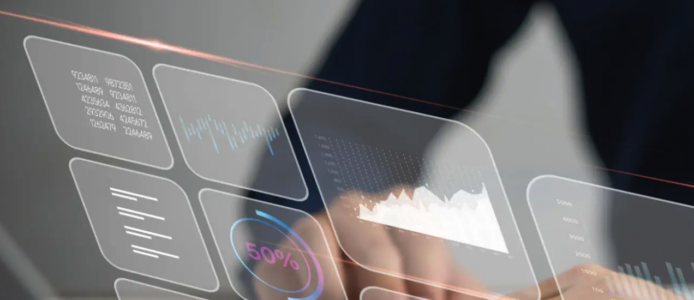The Frustration with Agile Project Management Tools: Reporting Across Multiple Boards

Agile project management tools have become the cornerstone for teams looking to collaborate effectively and manage their work in a dynamic environment. Tools like Jira, Trello, and Asana enable teams to break down projects into manageable chunks, create visibility into task progress, and empower agile methodologies such as Scrum and Kanban. However, while these tools excel at organizing individual teams and projects, they often fall short in one critical area: reporting across multiple boards and resources at once.
For many growing organizations, especially those working across numerous teams or departments, this limitation can create significant roadblocks. The frustration is palpable for project managers, executives, and resource planners who need a holistic view of their workforce but are stuck jumping from board to board, piecing together reports manually. Let’s dive deeper into this challenge and why it continues to cause headaches for many.
The Siloed Nature of Agile Boards
Agile tools are often designed around the concept of a “board”—a visual representation of a specific project, team, or initiative. While this is great for individual teams, each working on their own board, it becomes a logistical nightmare when you’re managing multiple teams or cross-functional resources. Project managers can easily track tasks within a single board, but when asked to assess all resources across various projects, it quickly becomes overwhelming.
Many companies have resources working across multiple projects, often spread across different boards. Want to know if John from the engineering team is over-allocated across three projects? You’ll need to dig into each board one by one. What if the executive team wants to know which resources are working on which projects across the organization? Unfortunately, many tools won’t let you generate a report across multiple boards, making resource allocation and workload balancing feel like a jigsaw puzzle with missing pieces.
Lack of Cross-Board Reporting and Resource Management
One of the biggest frustrations is the inability to pull comprehensive reports on all resources across boards at once. For organizations that work in a fast-paced, cross-collaborative environment, this means project managers have to gather information from multiple sources manually, leading to inefficiencies and errors.
Consider these common scenarios:
- Overloaded Resources: Without a way to see all tasks across all boards, it’s impossible to get a clear picture of an employee’s total workload. Are they fully utilized, or are they spread too thin? These critical questions can’t be answered unless someone manually compiles data.
- Project Bottlenecks: Cross-team projects rely on the ability to spot bottlenecks quickly. However, if you’re forced to look at each board in isolation, bottlenecks in resource availability or capacity often go unnoticed until it’s too late.
- Executive-Level Reporting: Leadership teams need a bird’s-eye view of resource allocation and project status. Without cross-board reporting, project managers are often scrambling to produce fragmented data that lacks clarity and accuracy.
The Result: Time-Consuming, Manual Workarounds
Because of these limitations, many teams end up creating manual workarounds. They export data from each board into Excel or another reporting tool, manually compile resource usage reports, and then build their own dashboards. This tedious process not only wastes valuable time but also introduces potential errors that come from data being manually handled and updated.
In a world that prizes efficiency and real-time reporting, it seems counterintuitive that project managers have to revert to manual processes to get a comprehensive view of their resources. Agile tools, while excellent for tracking individual projects, fail to support teams that operate at scale across multiple boards or teams.
The Impact on Decision-Making
Without a way to easily track and report on all resources, decision-making becomes less informed and more reactive. If you can’t accurately gauge how much work your team has on their plates, it’s difficult to make strategic decisions regarding new projects, staffing needs, or deadlines.
- Inefficient Resource Allocation: Teams may be underutilized or overworked simply because there is no easy way to assess their overall workload.
- Delayed Projects: Cross-functional teams working on multiple boards may cause delays due to hidden bottlenecks in resource availability.
- Inaccurate Reporting to Stakeholders: Executives expect clear, concise reports on project progress and resource usage, but when project managers are forced to manually pull data from multiple boards, reports can be delayed and lack actionable insights.
The Need for Improved Cross-Board Functionality
To address this challenge, agile project management tools need to evolve. Organizations are demanding more comprehensive views of their resources, especially as agile adoption grows across departments and teams. Here’s what we should expect from these tools in the future:
- Unified Resource Reporting: Tools should provide an option to report on all resources across multiple boards in real-time. This would allow project managers to quickly assess workload distribution and balance resources effectively.
- Cross-Board Dashboards: Dashboards that allow a full view of all projects and their resources, without needing to open each board individually, would save time and improve decision-making.
- Advanced Analytics for Resource Management: Beyond simple task tracking, tools should offer advanced reporting options that help managers forecast capacity, plan workloads, and make data-driven staffing decisions.
Conclusion
While agile project management tools have revolutionized how teams work on a granular level, the inability to report on resources across multiple boards has created a significant pain point. As organizations grow and adopt agile practices at scale, the need for comprehensive, cross-board resource reporting is more urgent than ever. Without it, managers are left with time-consuming manual workarounds, fragmented reports, and missed opportunities to optimize resource usage.
The solution lies in agile tools evolving to meet the demands of modern, cross-functional teams. Until then, project managers and decision-makers will continue to feel the frustration of not having the full picture at their fingertips.
Our Work Management Tool, Herdr addresses these frustrations by providing enterprise-level reporting across boards, lists, workspaces for all your teams and resources.






